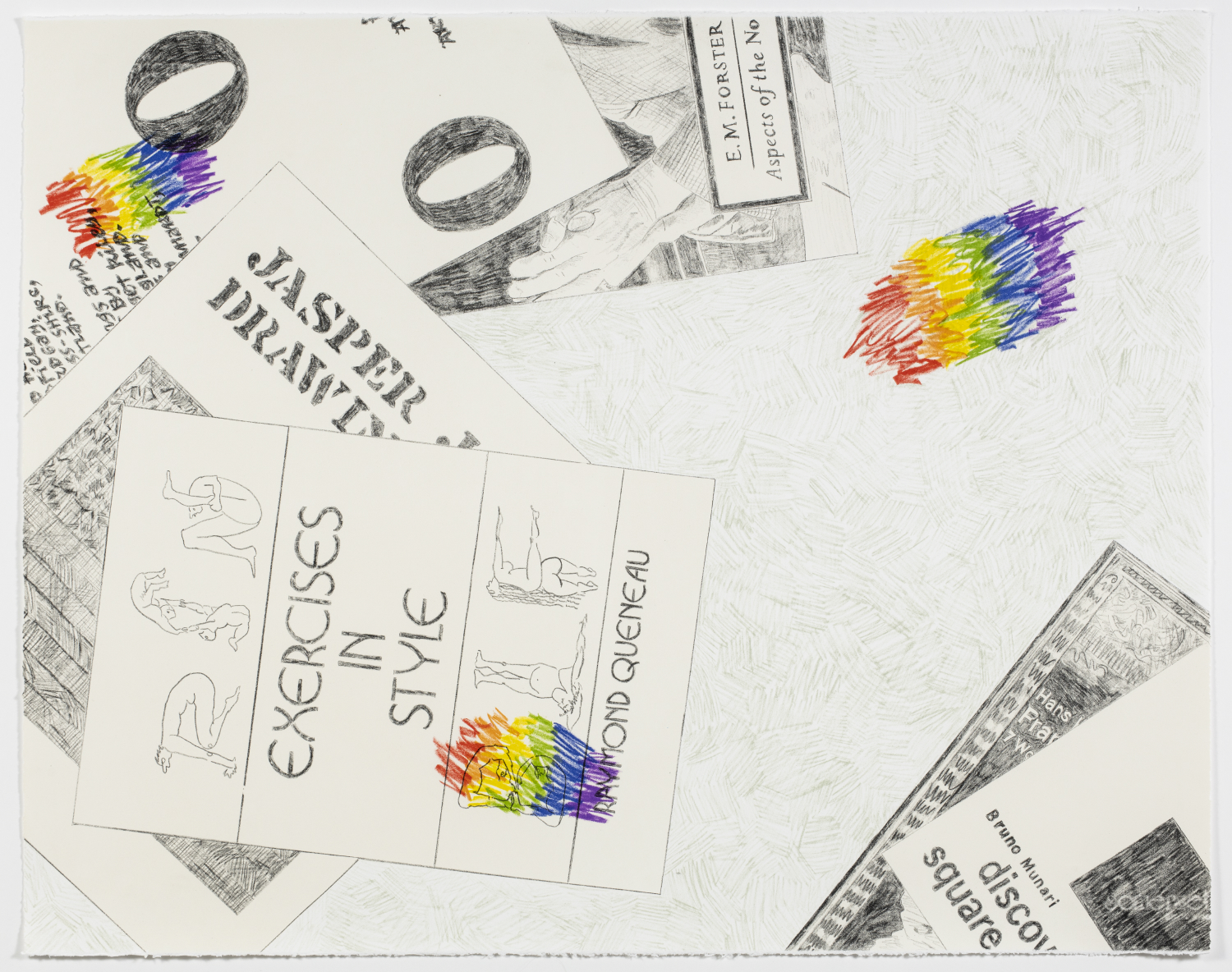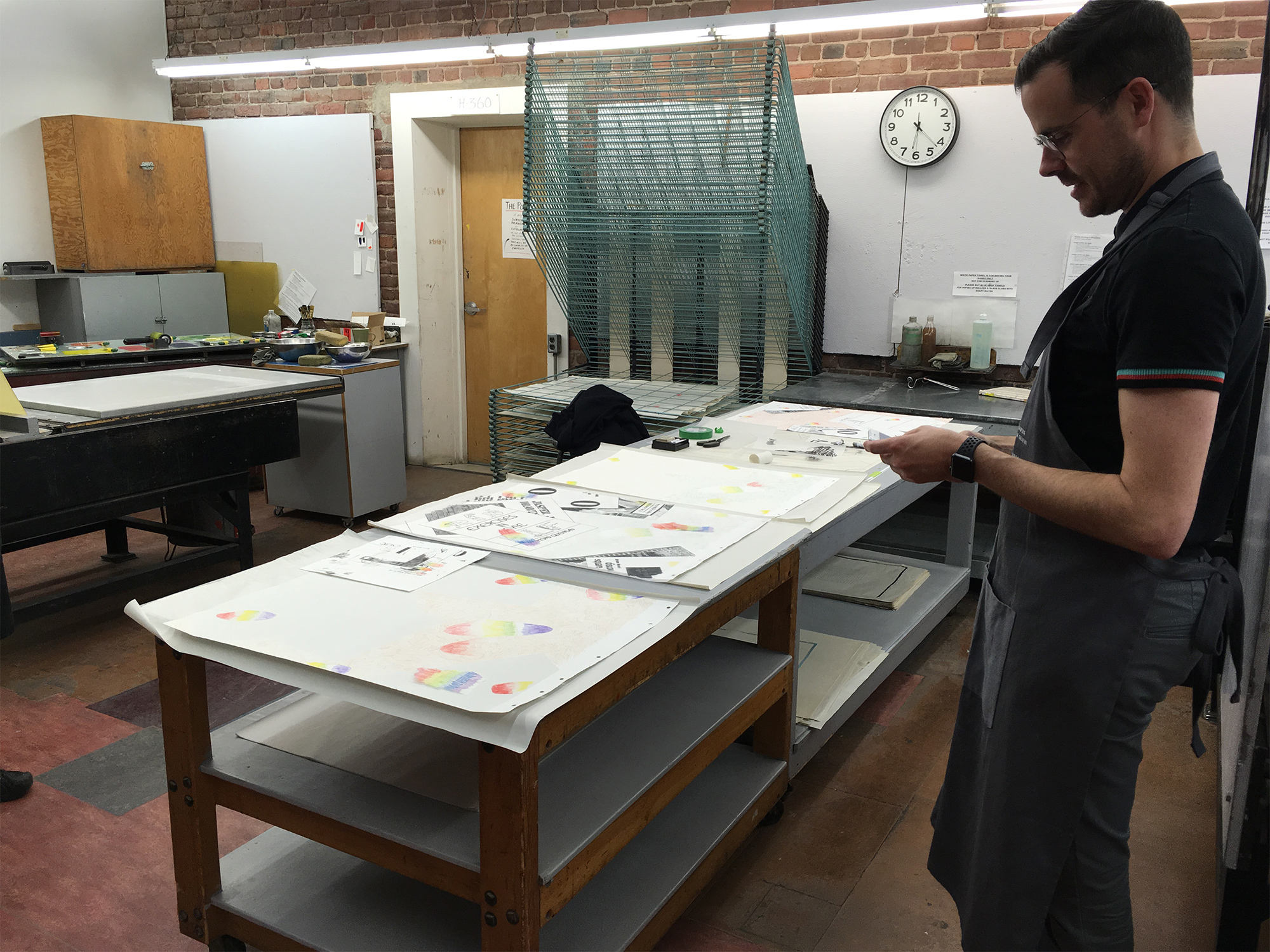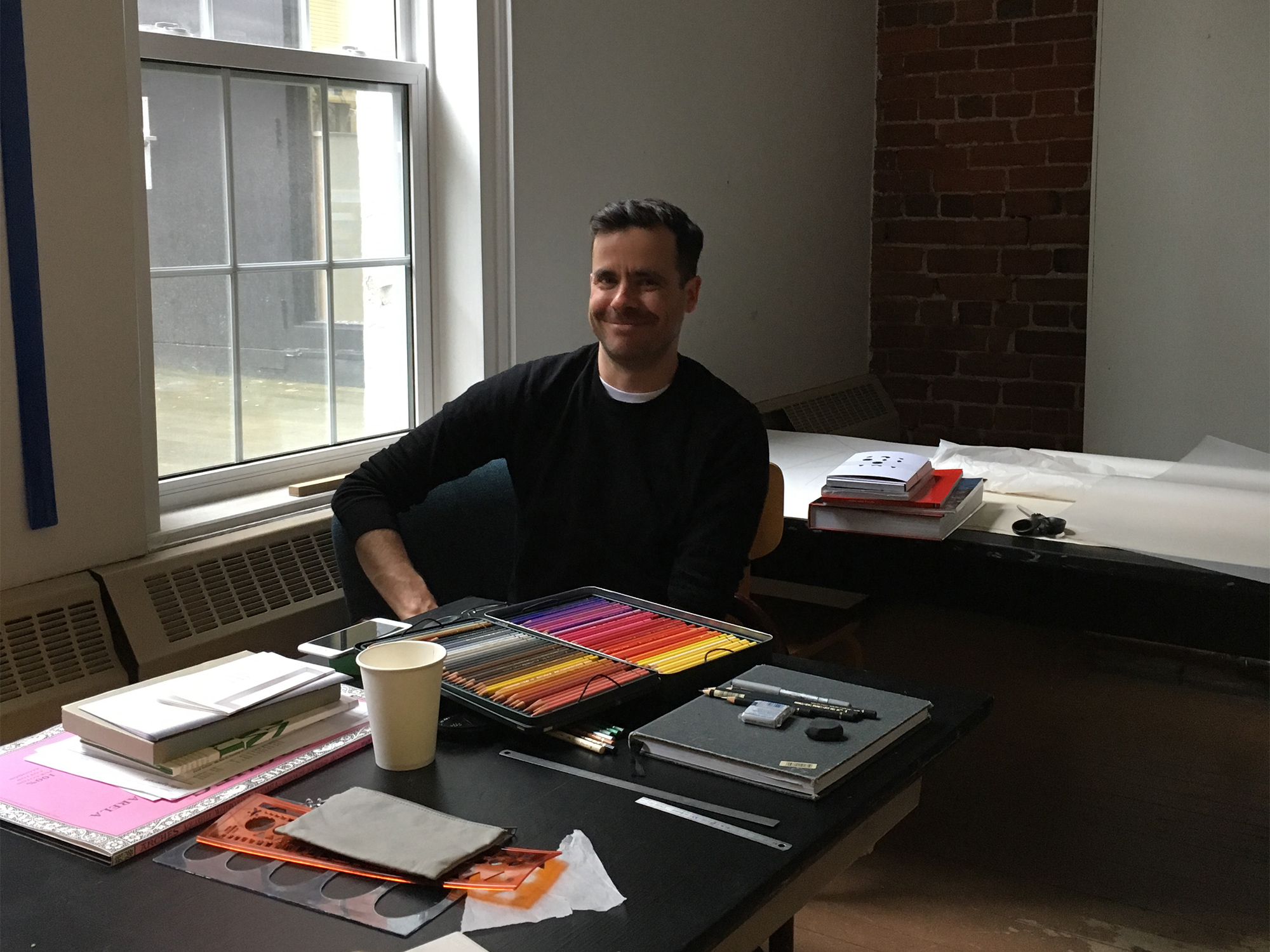Description
Derek Sullivan: Editioned Contemporaneity
What do I have to say of Derek Sullivan’s work? The difficulty is: to try to fix a meaning the way that words tend to do, or to apply a reading of Derek’s work is often to contradict its intention. Meaning in Derek’s work circulates in the valences. Significance moves in the flows and channels around the signs–objects, books, ephemera, phenomena–of Derek’s choosing. Islands in the stream[1]. How we navigate these channels and circulate between these islands on our own determines what we might take away from or where we might land in Derek’s drawings.
For me, I was lucky enough to land in Derek’s studio during his time at the NSCAD Lithography Workshop: Contemporary Editions, and again in his studio in Toronto’s west end some weeks later. In both cases, our conversation flowed similarly around the work. Coincidences, chance encounters, sauna culture, and a queer tendency to purchase and convert rural churches to country homes got us started. We also spoke about formative experiences. In particular, Derek’s early encounter with Felix Gonzalez-Torres’ work at a 1995 retrospective at the Guggenheim in New York City.
My own favorite chance encounter with FGT is through an essay recommendation from Frieze Magazine’s Evan Moffitt, Miwon Kwon’s “The Becoming of a Work of Art: FGT and a Possibility of Renewal, a Chance to Share, a Fragile Truce.”[2] A work which has generously deepened my understanding of FGT’s practice, and my understanding of how with writing we might also be able to circulate meaningfully around a work. Keeping a certain resistance to fixity alive in our own worded way.
Kwon describes FGT’s lived resistance to fixed meaning as, “he did not try to declare: ‘I existed’ or ‘I was here.’ He worked hard not to become a ‘statue’ but to be absorbed into the world itself as a form of becoming, to become part of other’s being limitlessly, forever. In this way, facing death, he fashioned his own dispersal, giving a whole new meaning to the concept of the ‘death of the author.’”[3] I find that Derek’s works position himself similarly, as a point of connection between the objects and signs dispersed across the page. But far from being an arbiter or essayist on their collective significance, Derek acts more as a prism, through which experience gets refracted–both fractured and expanded–onto the page. Or, in this case, onto the stone.
This kind of dispersion of the self, a redistribution and a sharing of experience, “to be absorbed into the world as a form of becoming” has a certain contemporary and technological resonance. Here I’ll note that before meeting in the archives of the Anna Leonowens Gallery, Derek and I first met on instagram through our own respective archives. Online, where each self is contained in self-selected fragments of text and image, social relationships become visual relationships; and individuals become networks. The iPhone acts as a prism too, through which individual selves get refracted–both fractured and expanded–into new collections of images, information and others.
A new sense of self might be taking shape. A self that understands the shape of itself more through the shattering and reflecting of experience than through the collection and ownership of it. A self which has come to a fragile truce with the mobility of meaning–how it flows, circulates, pools and folds. A self that cannot sit contained linearly on a bookshelf, but has been poured out: pooled on the floor and waits for the gaze of others to find new constellations in its midsts.
So, perhaps what I am offering on Derek’s work, is a way of looking. To approach Derek’s work, not as something to be decoded, but rather, followed. Watched over time. Stick with the anticipation of meaning; #instacrush; stay open[4]; harbour, “the fantasy that, surely, the buried information, insights and secrets have been waiting precisely for [your] gaze, for the narration that only [you] could give them”[5]. See Derek’s work as a soft bridge between the virtual and the IRL. A map for understanding the subtle, affective shifts from the book in our hands to the screen in our hands–from the archive that used to tell us who we are; to the becoming of archives ourselves.
[1] Dolly Parton & Kenny Rogers, “Islands in the Stream” Eyes That See In The Dark. Lionshare Recording Studios. 1983.
[2] Miwon Kwon, “The Becoming of a Work of Art: FGT and Possibility of Renewal, a Chance to Share, a Fragile Truce.” in Felix Gonzalez-Torres, ed. Julie Ault.
[3] Ibid. pg. 309
[4] Rhye, “Open” Woman. Hannibal Studios. 2013.
[5] Miwon Kwon, “The Becoming of a Work of Art: FGT and Possibility of Renewal, a Chance to Share, a Fragile Truce.” in Felix Gonzalez-Torres, ed. Julie Ault. pg. 282.
—Ryan Josey
Derek Sullivan Multifaceted in scope, Sullivan’s practice employs drawing, sculpture, book works, and installation to engage with the legacy of modernist art and design. While often recombining and synthesizing visual language from art history, literature, and popular culture, the formal references exercised in his work are contrasted with the ephemeralness of his production. A central concern is that books—through the act of reading, translation, and interpretation—are malleable framing devices which allow one to float or consider a set of ideas to momentarily freeze a subject in flux.



